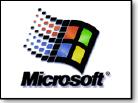|
Microsoft, DOJ timeline
|
 |
April 20, 1998: 3:35 p.m. ET
Highlights of the legal battle between Microsoft and Justice Department
|
NEW YORK (CNNfn) - The following are key dates in the legal battle between Microsoft Corp. and the U.S. Justice Department.
1991 - The Federal Trade Commission begins to investigate claims Microsoft monopolizes the market for PC operating systems.
1993 - The FTC deadlocks on two votes to file a formal complaint against Microsoft for antitrust infringements and decides to close investigations. But Justice Department and European Commission antitrust investigators begin independent probes.
1994 - Microsoft agrees to change contracts with PC makers and eliminate some restrictions on other software makers, settling both U.S. and European antitrust investigations.
1995 - Federal Judge Stanley Sporkin rejects 1994 antitrust settlement in January. But in June, the U.S. Court of Appeals reinstates that very same antitrust settlement. In April, the Justice Department blocks Microsoft purchase of Intuit, saying the deal could lead to higher software prices and diminish innovation.
October 1997 - The Justice Department sues Microsoft, alleging the software giant violated the 1994 consent decree by requiring computer makers to ship Internet Explorer on PC's loaded with Windows 95. Attorney General Janet Reno also asks a federal district court to impose penalties of $1 million-per-day.
October 1997 - The European Commission announces it is also looking at Microsoft's software practices.
October 1997 - Compaq, the world's largest maker of personal computers, claims Microsoft threatened to cancel Compaq's Windows 95 license if Compaq put Windows 95 on its PCs without Microsoft's web browser.
November 1997 - Microsoft asks a judge to dismiss the lawsuit, charging the Justice Department is using antitrust charges to hamper the development of the Windows operating system.
November 1997 - The Justice Department fires back against Microsoft, charging the software giant chose to integrate its web browser with Windows 95 in a desperate attempt to grab market share from rival Netscape Communications Corp.
December 11, 1997 - U.S. District Court Judge Thomas Penfield Jackson issues preliminary injunction forcing Microsoft to stop requiring PC makers to install its web browser on computers.
December 15, 1997 - Microsoft appeals Jackson's preliminary ruling.
December 16, 1997 - Microsoft asks a federal appeals court to lift Jackson's temporary injunction.
December 19, 1997 - Netscape Communications Corp., Microsoft's arch-rival, says it is working with PC makers to discuss more options for getting its products out.
December 23, 1997 - Microsoft says it plans to oppose the appointment of a special court expert in its ongoing antitrust battle with the government. Microsoft also tells CNNfn the government should stay out of people's computers and allow the software industry to decide what features to offer.
January 22, 1998 - Microsoft reaches a partial settlement with the Justice Department that allows personal computer makers to remove or hide its Internet software on new versions of Windows 95. Separately, Netscape announces plans to give its browser away for free.
February 5, 1998 - The Justice Department shifts its inquiry to include deals Microsoft has cut with Internet Explorer 4.0 content partners, including Wired Digital. Reports indicate the software giant may have tried to leverage its dominance in new markets through exclusive arrangements with its partners.
February 17, 1998 - A Texas judge dismisses a lawsuit against Microsoft that sought to have the software maker's controversial non-disclosure agreement ruled invalid.
February 20, 1998 - The Justice Department subpoenas some of the nation's largest Internet service providers, including America Online, Sprint and MCI Communications Corp. in order to evaluate their contractual agreements with Microsoft.
February 25, 1998 - Microsoft's market capitalization crosses the $200 billion mark.
March 2, 1998 - One day before Bill Gates is scheduled to testify before the U.S. Senate Judiciary Committee, Microsoft revises deals it has with approximately 40 Internet service providers, allowing them to promote browser software made by Microsoft competitors.
April 10, 1998 - In a concession to the Justice Department and the Senate Judiciary Committee, Microsoft no longer requires its Active Channel web partners to promote its Internet Explorer web browser exclusively on their sites. Certain channel partners are also allowed to pay Netscape to place its Netcaster channel bar on their sites.
April 14, 1998 - Microsoft says it will ship Windows 98 integrated with the Internet Explorer web browser and a browser icon visible on the desktop. The company says it has no plans to allow computer makers to hide the browser icon, as they can under an agreement that applies to Windows 95.
|
|
|
|
|
 |

|

